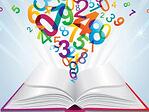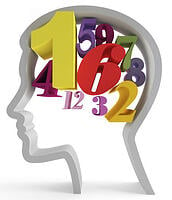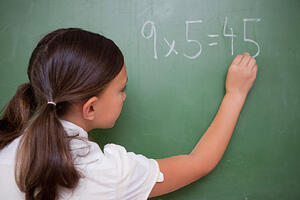 People often ask why the 11 & 12 times tables are included in the LearnFast Maths Skills Booster when our number system is based on 10?
People often ask why the 11 & 12 times tables are included in the LearnFast Maths Skills Booster when our number system is based on 10?
This is a good question and the answer has several components: neuroscience influence, practicality, legacy issues, and also some curious factors.
Neuroscience
Over the years this question is often asked, generally by students wanting to make it “easier”. And therein lies the influence from neuroscience on including 11 & 12. Their inclusion creates both extra levels of difficulty and 40% more repetitions (169 answers instead of 121). Both of these are essential for helping make use of the brain’s plasticity to improve its functioning and learning capacity.
Practicality
The practical reason is that we commonly use sets of numbers where being comfortable with multiplying and dividing by 12 is useful.
For example: eggs are sold by the dozen, there are 12 months in our calendar year, 24 hours in a day, 3600 in a circle, and others. The more familiar you are with recognising multiples of 12 the easier you can do calculations using these items.
Legacy
Admittedly, it was initially a legacy of how I was taught and I was pleased with the results (if it’s not broke don’t try and fix it). In the late 1960’s/early 1970’s our school textbooks still had pounds shillings and pence calculations. So 12 times was useful for doing homework.
The curious:
Being numerate also means being able to recognise number relationships - the simplest we learn is that numbers ending in 0, 2, 4, 6 & 8 are “even”.
An easy number relationship to learn is double digits have 11 as a factor (11, 22, 33, 44, 55, 66 ...). Then as an extension of this, three digit numbers where the centre number is the sum of the two outside are also divisible by 11 (121, 132, 374, 693 and many others).
Additionally, a very cool number pattern is Pascal’s triangle which is in many high school mathematics textbooks and has several higher order mathematical applications. At the simplest level each number in the triangle is the sum of the two above it and the first 5 rows generated are the powers of 11 [1,11,121,1331,14641].
Finally, it seemed to me that 12 was a cool number as it is the largest number that has at least half of the numbers counting up to it as factors and this appeared to be quite a useful fact for solving exam equations and factorising.
Hence I always felt I had an edge being comfortable working with 12 times tables and I would like others to enjoy the same advantage.
All the reasons above were enough for me to conclude it was more beneficial to include 11 & 12 in the LearnFast Maths Skills Booster than exclude them.
The challenge
Get your students or children to accept the challenge - learn the tables until they cannot do them wrong in any order. You could even do it yourself!
I have a nephew who once whinged about how hard it was to do the jumbled version. So we timed me doing both the jumbled and the not jumbled - my times were 2:17 (jumbled) and 2:18 (not jumbled).
Related Posts
Build confidence with numbers via the LearnFast Maths Skills Booster



